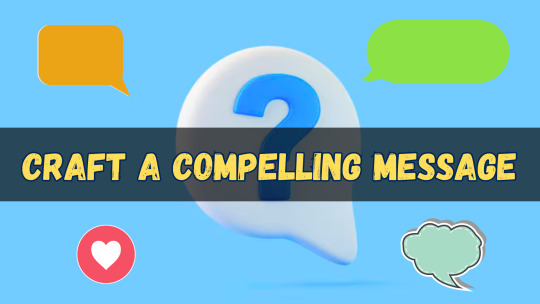Don't wanna be here? Send us removal request.
Text

Discover timeless, personalized jewellery designed to celebrate your unique story. From custom name necklaces to engraved keepsakes, each piece is made with love to reflect who you are and what you cherish most.
0 notes
Text
How AI Content Creation Tools Can Save You Time and Effort

In the fast-paced world of digital marketing and content creation, staying ahead of the competition while maintaining high-quality output is a constant challenge. Whether you’re a blogger, marketer, or business owner, creating engaging and relevant content is key to attracting and retaining an audience. However, producing quality content consistently can be time-consuming and exhausting. This is where AI content creation tools become essential.
What Are AI Content Creation Tools?
AI content creation tools leverage artificial intelligence and machine learning algorithms to automate various aspects of content creation, including generating text, improving grammar, optimizing for SEO, and even creating images and videos. These tools analyze large volumes of data to understand context, language, and audience preferences, allowing them to produce content that is relevant, engaging, and tailored to your needs.
# Speed Up the Writing Process

One of the biggest time-saving benefits of AI content creation tools is their ability to generate content quickly. AI-driven writing assistants can generate blog posts, articles, social media captions, product descriptions, and more, significantly reducing the time it takes compared to a human writer.
# Enhance Content Quality with AI-Driven Insights
AI content creation tools don’t just write content—they also help improve the quality of the content you produce. For example, some AI tools provide suggestions for better readability, grammar corrections, and even stylistic adjustments.
# Reduce Writer's Block and Improve Creativity

Many content creators often struggle with writer's block. AI tools can act as creative partners, helping you generate ideas, structure your content, and even suggest alternative phrases or angles to approach a topic. AI-powered writing tools can offer topic suggestions or sentence starters, giving you a foundation to build on.
# Automate Repetitive Tasks
Content creation often involves repetitive tasks such as editing, proofreading, or resizing images. With AI tools, many of these tasks can be automated, freeing up time for more creative work.
For instance, tools like Grammarly can automatically proofread your content for grammar and spelling errors. Image editing tools like Canva can help you resize images for various platforms with just a click.
# Personalized Content at Scale

AI tools are also great for creating personalized content at scale. For instance, AI can analyze audience data to understand their preferences, behaviors, and interests, and then generate content that is tailored to specific audience segments.
# Reduce Costs on Content Creation
Outsourcing content creation to writers or agencies can be expensive, especially for businesses that need regular content. AI content creation tools offer a more cost-effective solution, allowing businesses to generate content in-house at a fraction of the cost.
# Improve Consistency and Brand Voice
AI content tools can help keep your content's tone and voice consistent across various platforms. By inputting your brand’s guidelines or preferred writing style, AI tools can automatically adjust the content they create to match your brand's personality.
You can also watch: Meet AdsGPT’s Addie| Smarter Ad Copy Creation In Seconds
youtube
Conclusion
AI content creation tools are transforming the way businesses and creators approach content production. By speeding up the writing process, enhancing content quality, automating repetitive tasks, and providing valuable insights, AI tools allow creators to save time and effort while producing high-quality, engaging content. Whether you’re a small business owner, marketer, or individual content creator, embracing AI technology can help you stay ahead of the competition and maximize your content strategy’s potential.
0 notes
Text
Ad Creation Made Easy: Step-by-Step Guide for Beginners

Creating ads may seem overwhelming if you're just starting, but with the right approach and tools, ad creation can become an accessible and effective way to reach your audience, drive traffic, and boost conversions. Whether you're a business owner, content creator, or marketer, understanding the basics of ad creation is crucial to maximizing your digital marketing efforts. This step-by-step guide will walk you through the essentials of ad creation, making it easy for beginners to craft compelling, results-driven ads.
Step 1: Understand Your Audience
Before you create an ad, it’s crucial to understand who you’re targeting. Knowing your audience helps you design more relevant and compelling ads that will resonate with users. Consider the following factors:
Demographics: Age, gender, location, and income level can influence how your ad is perceived.
Interests: What are your audience's hobbies, preferences, and behaviors?
Step 2: Define Your Goal

What is the goal you want to achieve with your advertisement? Clearly defining your objective is vital for successful ad creation, including keyword-based ad campaigns. Your goal might fall into one of the following categories:
Brand Awareness: Let people know about your product, service, or content.
Lead Generation: Capture contact information from potential customers.
Step 3: Choose the Right Ad Format
Different platforms have different ad formats that may work better depending on your goal. Here are a few popular platforms and the ad formats you can use:
Facebook & Instagram Ads: These platforms allow a variety of ad types, including image ads, carousel ads (multiple images or videos), video ads, and story ads. They’re great for visual content and social engagement.
Step 4: Craft a Compelling Message

The content of your ad—its copy and visuals—plays a significant role in its success. Here are some suggestions for creating impactful ad copy:
Keep It Simple: People have limited attention spans, so make sure your ad is concise and to the point. Focus on delivering a message quickly and clearly.
Highlight the Benefits: Explain how your product or service solves a problem or meets a need. Use language that appeals to your audience's desires or pain points.
Step 5: Design Your Visual Elements
A visually appealing ad will draw attention and increase the likelihood that users will click or engage. Consider these design tips:
Keep It Simple:Avoid cluttering your ad with excessive text or images. Instead, concentrate on delivering a single, clear message or offer.
Brand Consistency: Use your brand’s colors, logo, and fonts to maintain consistency across all your ads.
Step 6: Optimize Your Ad for Performance

Once your ad is live, it’s important to track its performance and make necessary adjustments. Important metrics to track include:
Click-through Rate (CTR):The proportion of individuals who clicked on your ad after viewing it. A higher CTR signifies that the ad is performing well.
Conversion Rate: The percentage of users who took the desired action (e.g., made a purchase, signed up) after clicking your ad.
Step 7: Test and Iterate
Ongoing testing and optimization are essential for achieving success in ad creation. A/B testing (comparing two versions of an ad) can help you determine what resonates best with your audience. Test different elements like:
Headlines
Call-to-Action
Images and Video Thumbnails
You can also watch: Effortless & Smart Ad Creation Made Simple with AdsGPT!
youtube
Conclusion
Ad creation doesn’t have to be a complicated process. By following these simple steps—understanding your audience, setting clear objectives, selecting the right platform and format, crafting compelling ad copy, and optimizing based on performance—you can do ad creation that effectively engage your audience and meet your marketing goals. Remember, successful ads are the result of constant testing and refinement, so don’t be afraid to experiment and learn as you go.
3 notes
·
View notes